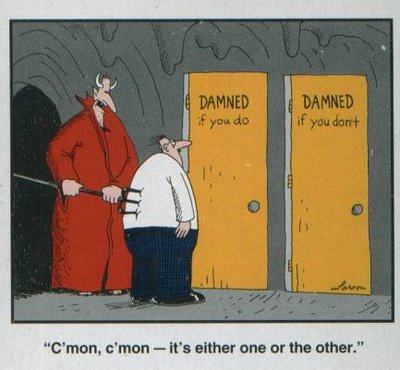When I was a kid, I loved watching the Wizard of Oz, and not just because it had little people and flying monkeys; both very cool in my books. It was also the mystery of “The Great and Powerful Oz”. Quite frankly he scared me. He knew far more than me, Dorothy or her 3 odd companions and made sure we knew it. And who wouldn’t listen to a giant floating green head?
 But when the curtain came back, my perception of him changed, even as a kid. I felt let down; tricked even. I now find eerie parallels to that experience in Social Media Marketing…
But when the curtain came back, my perception of him changed, even as a kid. I felt let down; tricked even. I now find eerie parallels to that experience in Social Media Marketing…
The New Yellow Brick Road
Incompetence is hard to spot in fast moving niche industries like social media marketing. In fact, for those masquerading as experts, its a perfect storm. Now Social Media is the new Yellow Brick Road and its gridlock folks.
A recent experience with a social media expert really sealed it for me. He had the demeanor of an expert (very confident), knew the lingo, and could talk a good game on the key social media hot topics. On the surface he looked and sounded really quite impressive; much more than my humble resume… But as I dug in with some questions (out of genuine interest sake – no malicious intent!), the facade began to crack.
What is most frightening to me is that these people are getting tons of work with big companies. It’s a classic supply and demand issue…
- Huge demand for social media expertise and resources
- The best people are crammed with business (or really don’t want to do it)
- Evolution is fast paced
- Its easy to sound like an expert
Disclaimer! While I don’t want to add “fuel to the fire” for those that thrive on negative perspectives regarding social media, I do feel compelled to help those struggling to find the right person/agency for the right job.
How to Spot Them
The risk of hiring a fake expert far outweighs the risk of the extra time to find and test the right person or firm. So here are some quick ways to spot and test them before you hire them.
- What is their background? Dig into it. Use Linked In to check their employment history. Social media requires a fundamental understanding of marketing and how to communicate with customers.
- What does their blog tell you? Are they regurgitating SM 101 or is their original insight there? Their writing is an indication of their thinking; if its amateur or borrowed, you have a problem.
- What are they pitching? If they walk in pitching Facebook and Twitter show em the door. Period. Customers dictate suitable channels, not the opposite. Anyone who thinks that social media is a “cure all” is clueless or selling.
- What is their real reputation? Unfortunately reputations can be manufactured these days as can results. Always ask and check real client references. Look at who they are associated with and Google them fiercely to find any questionable parts to their story.
- Do they ask good questions? A quality adviser asks questions, listens and then asks more questions. They ask the right questions about you, your customers and your business. The first question they should ask is “Why do you believe you (or your customers) need Social Media?”
How to test and get rid of a charlatan
 So you have hired a Social Media Guru, but there is something still nagging at you deep inside your belly; something that just doesn’t smell right. Here are some ways to test your gut instinct and minimize your risk.
So you have hired a Social Media Guru, but there is something still nagging at you deep inside your belly; something that just doesn’t smell right. Here are some ways to test your gut instinct and minimize your risk.
- First consultation – Play the lame duck: Let them take the lead. The best way to sink someone who doesn’t know much is to give them the room to prove it. Ask them questions and see where it goes. If all they do is talk, then you have your first sign.
- Sub-$10K trial: Figure out what you can do for under $10K and test their capabilities. If they focus on setting up Facebook pages and Twitter accounts and using “secret proprietary tools” to get you followers, they are flying monkeys.
- Hold them accountable: Get them to agree to outcomes from their work that isn’t based on number of followers; that’s way too easy to fudge, especially on Twitter. Be tough on them; the good ones will appreciate this and the pretenders will wilt.
- Keep everything project or short term: Don’t tie your self to anyone early unless they obviously are actually experts. Keep non-committal until that uneasy feeling in the pit of your stomach is gone. This allows you to move them to the exit quick if they show their true colors.
Know thyself – Teach thyself – Become the Real Wizard!
This is about roles and training your own staff to do most of this work. I have a different opinion on SM roles past one omnipotent expert. To be frank, I can barley set-up a Twitter account past the basics, but I can design a targeted strategy and social experience for enterprise companies. What does that make me then?
Here are some ways to understand different people you will run into and roles they fit.
- Social Media (technical) Expert: This is what you will run into most often… someone who has a good grasp on all of the technology to do Social Media and how to “steal” followers. Its a necessary role, but any college kid can do it.
- Strategist: While Social Media as a channel requires a unique perspective, many of the rules of marketing still apply. Your strategist needs to be able to work from or perform research, analyze it and form it into a practical, integrated, and scalable strategy for your business.
- Farmers: Commonly known as community managers, these folks are service all the way; highly friendly and easy to speak with. They don’t have to have all the answers, but need to be able to connect customers quickly and easily to those that do and above all, make them feel good.
- Hunters: This role is quite specialized and is your connector; an influencer or super influencer that promotes your brand and helps identify new key people to connect with. This person needs knowledge of your business and customers to connect properly. Many fake gurus will tell you they can hunt, but stealing followers with an app is not hunting.
- Experience Designers: If you can afford it, a social experience designer can craft a unique, positive customer experience in social channels and tie that seamlessly into other channels. For enterprise companies, agencies often attempt this because of their understanding of the brand.
.
Training yourself and your team
This is a no-brainer to me and has absolutely no downside for you. Whether you know it or not, you are far more capable of planning and executing basic Social Media than you think. You know your customers and your business better than any outsider; you know what works and what doesn’t. So invest the time to educate yourself and your team.
There are a ton of great free resources out there to learn from like: www.marketingprofs.com www.marketingsherpa.com and www.hubspot.com to name a few. Further, get on twitter personally and start joining marketing chats. You would be surprised how much you can learn in a short time.
Every Time Someone Says “Social Media Expert”, Guy Kawasaki gets a $1
Okay, I should stop picking on Guy… but he put himself out there so I’ll use it one more time. And I am not saying he is a fake, but when you tell people they “Don’t need a strategy, just go do it” and “there are no influencers; nobodies are the new somebodies” I get to pick on him a little bit. And I’m done.
So what is the one behavioral characteristic you can use to spot a fake?
Insistence. People who don’t know much have a very small comfort zone and will be highly confident inside it until they are pushed to the outside. At that point, they will push back or become insistent on a specific solution, i.e. “You need to be on Facebook and Twitter!”
They will be one trick ponies for sure.
Don’t be Enchanted
B2B Social Media is common sense applied to human to human relationships in business. Nothing more. The best thing you can start with is asking good questions- of your customers, your team and your external advisers. Educating yourself on the basics really doesn’t take that much time or effort and will benefit you in so many ways in the short and long term.
Take the time and immunize yourself.
Thanks for reading and as always I enjoy the debate so feel free to push back or comment.
Cheers!
Jeff – Sensei
